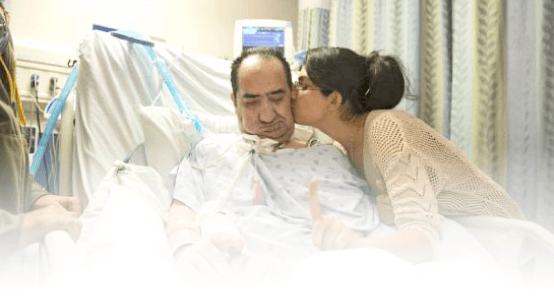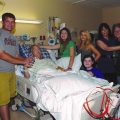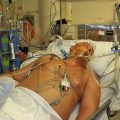Hi, it’s Patrik Hutzel from INTENSIVECAREHOTLINE.COM where we instantly improve the lives for Families of critically ill Loved ones in Intensive Care, so that you can make informed decisions, have PEACE OF MIND, real power, real control and so that you can influence decision making fast, even if you’re not a doctor or a nurse in Intensive Care!
This is another episode of “YOUR QUESTIONS ANSWERED“ and in last week’s episode I answered another question from our readers and the question was
How Can I Have Control & Power in Making Decisions for My Wife with a Tracheostomy in ICU?
You can check out last week’s question by clicking on the link here.
In this week’s episode of “YOUR QUESTIONS ANSWERED” I want to answer questions that we get quite frequently as part of my 1:1 consulting and advocacy service!
What Are the Benefits of Early Mobilization of My Loved One in the ICU?

Early mobilization of critically ill patients is a safe option with additional benefits of improving functional outcomes. The term mobilization in the Intensive care unit is referred to as physical activity performed to the intensity that can bring about physiological changes.
Approximately 20–50% of critically ill patients experience intensive care unit-acquired weakness (ICU-AW). ICU-AW includes a wide variety of disorders caused by polyneuropathy and myopathy after ICU admission, and it is associated with reductions in health-related quality of life and increased risks of death after hospital discharge. ICU-AW is potentially aggravated by long periods of bed rest due to routinely managed sedation and immobility.
In the critical patient management, interventions that promote long periods of immobilization are usually performed such as the use of mechanical ventilation, administration of drugs, sedatives, analgesics, drugs to control anxiety and agitation, etc. Weakness is a common complication and is associated with a severe disability and a long rehabilitation. In this line, the intensive care unit acquired weakness (ICU-AW) is associated with joint contractures, thromboembolism, resistance to insulin, microvascular alterations, pressure ulcers, atelectasis, pneumonia, extension of the weaning period, delirium, increase in the days of income, increased mortality, and development of disabilities. Rehabilitation and early mobilization are considered therapeutic strategies to prevent the development of intensive care unit acquired weakness (ICU-AW).
RECOMMENDED:
What are the benefits of early mobilization?
Early mobilization has been proposed as a promising intervention to counteract intensive care unit acquired weakness (ICU-AW) because it attenuates critical illness-associated muscle weakness.
- In 2013, Berry et al. reported that early exercise has the potential to decrease the length of the hospital stay and improve function in patients with acute respiratory failure.
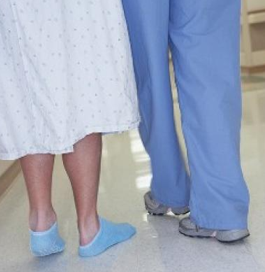
- In 2017, Ramos Dos et al. proposed that early mobilization appears to be important for preventing postoperative complications, improving functional capacity and reducing the length of hospital stay of patients who underwent cardiac surgery.
- In the same year, a study by Nydahl reported that early mobilization and physical rehabilitation for critically ill patients appear to be safe and have a low risk of potential adverse events.
- According to the 2018 study by Zhang et al., early mobilization in the ICU exerts a positive and safe effect on hospital outcomes for patients who require mechanical ventilation because it confers the significant benefit of decreasing the duration of mechanical ventilation and the length of stay in the ICU.
What are the complications of immobility?
Below is a gist of the system-wise complications of prolonged immobility.
- In respiratory system, it causes retention of secretions, reduced respiratory excursion, pneumonia, and atelectasis.
- Cardiovascular complications include orthostatic hypertension, deep vein thrombosis, hypovolemia, and embolization.
- Gastrointestinal complications include decreased motility, constipation, ileus.
- Musculoskeletal complications include muscle shortening, weakness, and wasting which would, in turn, cause functional denervation, joint contractures, bone demineralization, and heterotrophic ossification.
- Neurological system is affected by polyneuropathies due to reduced microcirculation at the nerve.
- Endocrine system-related complications include hyperglycemia with insulin resistance and catabolism.
- Integumentary system, it can cause pressure ulcers.
- Psychology of the person is affected causing depression and delirium.
What are the techniques for early mobilization?
Early mobilization in the ICU has been advocated as a therapeutic strategy to prevent intensive care unit acquired weakness (ICU-AW), reducing the negative effects of immobility on muscles and other organ systems. Mobilization in the ICU is feasible and safe provided that consensus guidelines are followed.
The frequency of early mobilization can be conducted every day of the week or five days a week. Although active techniques are preferred more than passive and attribute more to the prevention of complications, these are some of the listed techniques that come under the scope of early mobilization:
- Passive and active range of motion
- Active side-to-side turning
- Exercising in the bed
- Bedside sitting
- Transfers from the bed to the chair and vice versa
- Ambulation
- Hoist therapy
- Tilt table
- Resistance exercises
- Electrical stimulation
Premobilization screening criteria to identify patients for whom rehabilitation is suitable and criteria for discontinuing mobilization should be established for each ICU.
Examples of safety criteria for starting and stopping rehabilitation in the intensive care unit
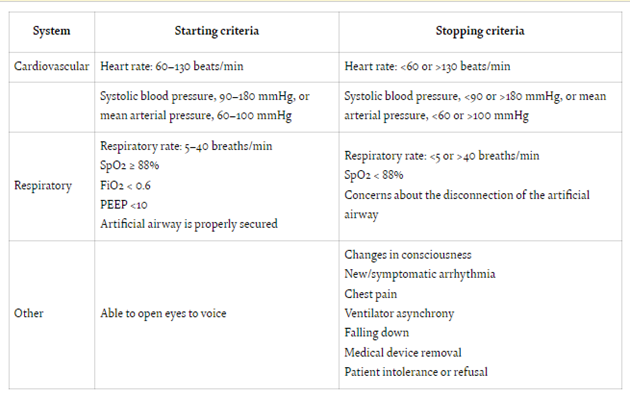
What are the barriers for early mobilization in ICU?
Early active mobilization and rehabilitation in the intensive care unit (ICU) is being used to prevent the long-term functional consequences of critical illness. It is a complex intervention that requires careful patient assessment and management, as well as interdisciplinary team cooperation and training. Patient safety is one of the most commonly reported barriers to delivering early mobilization, including respiratory, cardiovascular and neurological stability and the integrity of invasive lines.
Many observational and randomized controlled trials over the past decade have demonstrated that ICU clinicians are reluctant to mobilize mechanically ventilated patients, despite the scarcity of reported adverse events and the potential benefits. The barriers and facilitators to early mobilization can be divided into patient factors, ICU team factors and organizational factors.
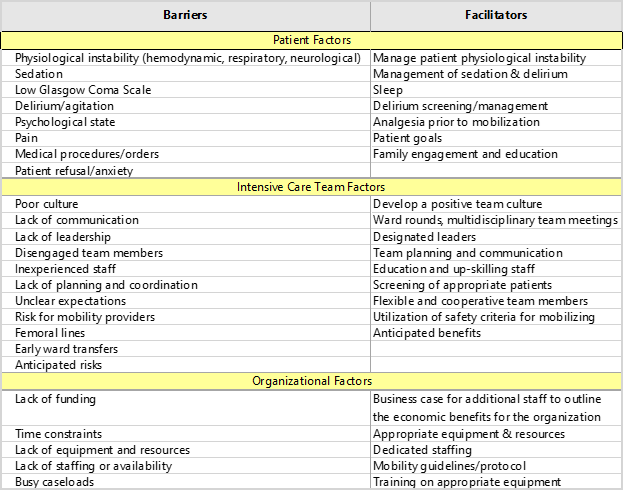
Suggested links:
CONCLUSION:
Mobilizing individuals in an intensive care setting decreases length of stay and hospital costs. With an interdisciplinary team to plan, implement, and evaluate stages of the program, a successful early mobilization program can be implemented across all ICUs simultaneously and affect change in patients who will require prolonged mechanical ventilation.
Regardless of the different techniques and periods of mobilization applied, early mobilization may be initiated safely in the ICU setting and appears to decrease the incidence of intensive care unit acquired weakness (ICU-AW), improve the functional capacity, and increase the number of patients who are able to stand, number of ventilator-free days and discharged-to-home rate without increasing the rate of adverse events.
However, so many people that we are consulting here at Intensive Care Hotline tell us that the ICU team is not mobilizing patients. They’re not doing physical therapy, or when people are in LTAC, it’s even worse. Early mobilization has consistently been reported as safe and feasible in the ICU setting especially when it comes to weaning ventilation and tracheostomy.
RECOMMENDED:
The only way you can wean someone off the ventilator successfully is by simply strengthening all of their muscles again, including the breathing muscles. You can only really strengthen the breathing muscles by getting people mobilized, by sitting them up, by encouraging them to breathe, by doing breathing exercises. That is the only way you can successfully wean somebody off the ventilator from what we’ve seen. And with our services at INTENSIVE CARE AT HOME, we can make that happen for your loved one.
REFERENCES:
- Early Mobilization of Patients in Intensive Care: Organization, Communication and Safety Factors that Influence Translation into Clinical Practice
https://ccforum.biomedcentral.com/articles/10.1186/s13054-018-1998-9#Fig1
- Early mobilization of critically ill patients in the intensive care unit: A systematic review and meta-analysis
- The Effects of Early Mobilization on Patients Requiring Extended Mechanical Ventilation Across Multiple ICUs
https://www.ncbi.nlm.nih.gov/pmc/articles/PMC7314317/
- The effects of active mobilisation and rehabilitation in ICU on mortality and function: a systematic review
https://pubmed.ncbi.nlm.nih.gov/27864615/
- Rehabilitation and early mobilization in the critical patient: systematic review
https://www.ncbi.nlm.nih.gov/pmc/articles/PMC6127491/
- Early mobilization of critically ill patients in the intensive care unit: A systematic review and meta-analysis
https://journals.plos.org/plosone/article?id=10.1371/journal.pone.0223185
- Early Mobilization in the ICU
https://www.physio-pedia.com/Early_Mobilization_in_the_ICU
- Early Mobilization on Patients with Mechanical Ventilation in the ICU
https://www.intechopen.com/chapters/69967#tab5
How can you become the best advocate for your critically ill loved one, make informed decisions, get peace of mind, control, power and influence quickly, whilst your loved one is critically ill in Intensive Care?
You get to that all important feeling of making informed decisions, get PEACE OF MIND, CONTROL, POWER AND INFLUENCE when you download your FREE “INSTANT IMPACT” report NOW by entering your email below!
In Your FREE “INSTANT IMPACT” report you’ll learn quickly how to make informed decisions, get PEACE OF MIND, real power and real control and how you can influence decision making fast, whilst your loved one is critically ill in Intensive Care! Your FREE “INSTANT IMPACT” Report gives you in-depth insight that you must know whilst your loved one is critically ill or is even dying in Intensive Care!
Sign up and download your FREE “INSTANT IMPACT” REPORT now by entering your email below! In your FREE “INSTANT IMPACT” REPORT you’ll learn how to speak the “secret” Intensive Care language so that the doctors and the nurses know straight away that you are an insider and that you know and understand what’s really happening in Intensive Care! In your FREE report you’ll also discover
- How to ask the doctors and the nurses the right questions
- Discover the many competing interests in Intensive Care and how your critically ill loved one’s treatment may depend on those competing interests
- How to Eliminate fear, frustration, stress, struggle and vulnerability even if your loved one is dying
- 5 mind blowing tips & strategies helping you to get on the right path to making informed decisions, get PEACE OF MIND, control, power and influence in your situation
- You’ll get real world examples that you can easily adapt to you and your critically ill loved one’s situation
- How to stop being intimidated by the Intensive Care team and how you will be seen as equals
- You’ll get crucial ‘behind the scenes’ insight so that you know and understand what is really happening in Intensive Care
- How you need to manage doctors and nurses in Intensive Care (it’s not what you think)
Thank you for tuning into this week’s YOUR QUESTIONS ANSWERED episode and I’ll see you again in another update next week!
Make sure you also check out our “blog” section for more tips and strategies or send me an email to [email protected] with your questions!
Also, have a look at our membership site INTENSIVECARESUPPORT.ORG for families of critically ill Patients in Intensive Care here.
Or you can call us! Find phone numbers on our contact tab.
Also check out our Ebook section where you get more Ebooks, Videos and Audio recordings and where you can also get 1:1 counselling/consulting with me via Skype, over the phone or via email by clicking on the products tab!
This is Patrik Hutzel from INTENSIVECAREHOTLINE.COM and I’ll see you again next week with another update!

